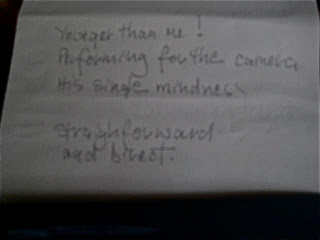
HOWL (15)
Directed by Rob Epstein and Jeffrey Freidman
Directed by Rob Epstein and Jeffrey Freidman
with James Franco, John Hamm, David Strathairn and Jeff Daniels
Howl is the fictionalized account of the 1957 obscenity trial surrounding the publication of Allen Ginsberg's poem of the same name, composed from court records and interviews with Ginsberg, and animation inspired by Illustrated Poems by Allen Ginsberg and Eric Drooker.
Howl is the fictionalized account of the 1957 obscenity trial surrounding the publication of Allen Ginsberg's poem of the same name, composed from court records and interviews with Ginsberg, and animation inspired by Illustrated Poems by Allen Ginsberg and Eric Drooker.
James Franco starts as the young Allen Ginsberg - counter-culture poet and chronicler of the Beat Generation. In his famously confessional, leave-nothing-out style, Ginsberg recounts the road trips, love affairs and search for personal liberation that led to the most timeless and electrifying work of his career: the poem Howl. Meanwhile in a San Franscisco courtroom Howl is on trail. Prosecutor Ralph McIntosh (David Strathairn) sets out to prove that the book should be banned, while suave defence attorney Jake Ehrlich (John Hamm) argues fervently for freedom of speech and creative expression. The proceedings veer from the comically absurd to the passionate as the host of unuual witnesses (Jeff Daniles, Mary-Louise Parker, Treat Williams, Alessandro Nivola) pit generation against generation and art against fear in front of conservative Judge Clayton Horn (Bob Balaban).
Howl is simultaneously a portriat of a renegade artist breaking down barriers to find love and redemption, and a romantic ride through a prophetic masterpiece that rocked a generation and was heard around the world.
22, 22, 27 March (2pm) - £3
Saturday 26 March (7.30pm) - £6 including a glass of wine, half a Peroni or a fruit juice
Bookings: 01424 229 111 http://www.dlwp.com/
Bookings: 01424 229 111 http://www.dlwp.com/







